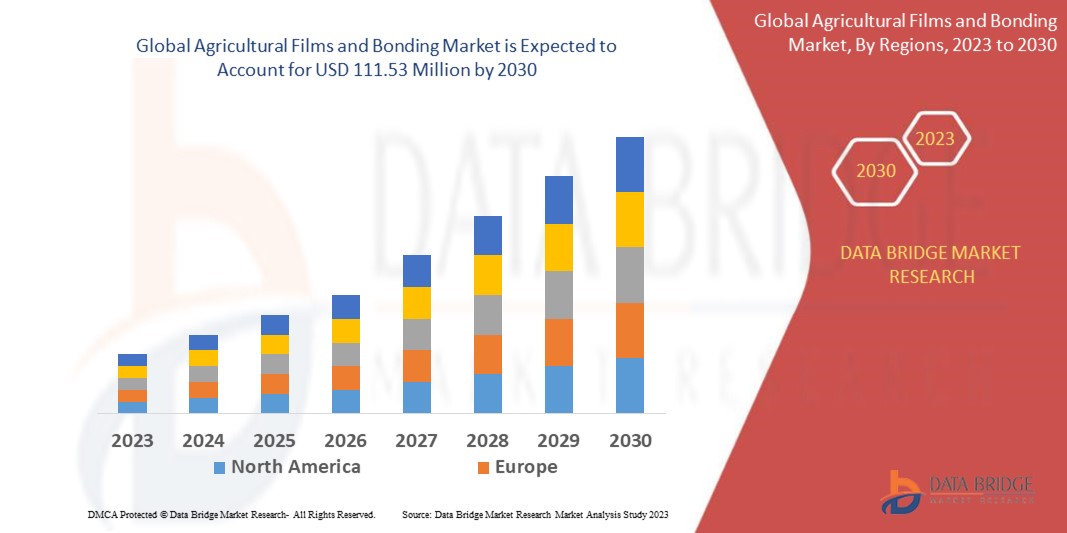Cultivating Tomorrow: Exploring the Intersection of Agricultural Films and Bonding

Introduction:
In the realm of modern agriculture, the marriage of innovation and tradition has paved the way for remarkable advancements in crop production and protection. One such innovation that has revolutionized farming practices is agricultural films and bonding technologies. From enhancing soil health to optimizing water usage and protecting crops from environmental stressors, these materials play a vital role in nurturing bountiful harvests while promoting sustainability. As we delve into the intricate world of agricultural films and bonding, we uncover a landscape where science, technology, and nature converge to cultivate a brighter future for farming communities around the globe.
Market Size:
Data Bridge Market Research analyses that the agricultural films and bonding market is expected to reach USD 111.53 million by 2030, which was USD 77.83 million in 2022, registering a CAGR of 4.60% during the forecast period of 2023 to 2030. In addition to the insights on market scenarios such as market value, growth rate, segmentation, geographical coverage, and major players, the market reports curated by the Data Bridge Market Research also include in-depth expert analysis, geographically represented company-wise production and capacity, network layouts of distributors and partners, detailed and updated price trend analysis and deficit analysis of supply chain and demand.
For more information, visit https://www.databridgemarketresearch.com/reports/global-agricultural-films-and-bonding-market
Market Share:
Within the expansive landscape of agricultural films and bonding, several key players dominate the market, each contributing to its dynamic growth trajectory. Companies such as Berry Global Inc., BASF SE, DowDuPont Inc., and ExxonMobil Corporation have emerged as leaders in the global agricultural films and bonding market, leveraging their expertise in materials science, manufacturing, and innovation to capture significant market share. Additionally, the market is characterized by a multitude of smaller players offering specialized products and solutions tailored to specific agricultural needs and regional requirements.
The Evolution:
The evolution of agricultural films and bonding technologies can be traced back to the mid-20th century, with the advent of polyethylene films for greenhouse and mulching applications. Over the decades, advancements in polymer chemistry, extrusion technology, and manufacturing processes have propelled the development of a wide range of agricultural films and bonding materials tailored to the unique needs of farmers and growers. From UV-stabilized films that prolong the lifespan of greenhouse covers to biodegradable mulch films that reduce plastic waste and enhance soil health, the evolution of agricultural films and bonding is a testament to human ingenuity and our commitment to sustainable agriculture.
Market Trends:
In the dynamic landscape of agricultural films and bonding, several trends have emerged, shaping the trajectory of the market and influencing product innovation and consumer preferences. One notable trend is the growing demand for high-performance films and bonding materials that offer superior durability, weather resistance, and UV protection, particularly in harsh agricultural environments. As farmers and growers seek to maximize crop yields and minimize environmental impact, there is a rising need for films and bonding solutions that provide long-lasting performance and reliability.
Additionally, there is an increasing emphasis on sustainable agriculture practices, driving demand for biodegradable and compostable films that minimize plastic pollution and promote soil health. Manufacturers are developing innovative materials derived from renewable resources, such as PLA (polylactic acid) and PHA (polyhydroxyalkanoates), to meet the growing demand for eco-friendly alternatives to traditional plastic films. Moreover, advancements in bonding technologies, such as adhesive lamination and extrusion coating, are enabling the production of multi-layer films with enhanced barrier properties and performance characteristics, further expanding the applications of agricultural films in crop protection, packaging, and storage.
Factors Driving Growth:
Several factors contribute to the sustained growth of the agricultural films and bonding market, each playing a crucial role in shaping its expansion and evolution. One of the primary drivers is the increasing need to enhance agricultural productivity and food security to meet the growing demands of a rapidly expanding global population. Agricultural films and bonding materials enable farmers and growers to optimize growing conditions, conserve resources, and protect crops from pests, diseases, and adverse weather conditions, thereby improving crop yields and ensuring a stable food supply.
Furthermore, changing climatic conditions and environmental challenges, such as water scarcity and soil degradation, are driving the adoption of agricultural films and bonding technologies to mitigate risks and safeguard crop production. Films used for mulching and soil stabilization help conserve soil moisture, reduce erosion, and suppress weed growth, while greenhouse films provide controlled environments for year-round cultivation, enabling farmers to extend growing seasons and diversify crop production.
Moreover, government initiatives and incentives aimed at promoting sustainable agriculture practices and reducing greenhouse gas emissions are fueling demand for agricultural films and bonding materials that support environmental stewardship and resource conservation. By investing in innovative technologies and adopting best practices, farmers and growers can enhance productivity, profitability, and sustainability, while minimizing their ecological footprint and contributing to a more resilient and sustainable food system.
Conclusion:
In conclusion, agricultural films and bonding technologies play a crucial role in modern agriculture, enabling farmers and growers to overcome challenges and unlock new opportunities for sustainable crop production and resource management. As the market continues to evolve and innovate, driven by changing consumer preferences, technological advancements, and environmental imperatives, there is immense potential to transform farming practices and promote resilience, efficiency, and sustainability across the agricultural value chain. By embracing innovation, collaboration, and stewardship, we can harness the power of agricultural films and bonding to cultivate a brighter future for farming communities and nourish the planet for generations to come.






